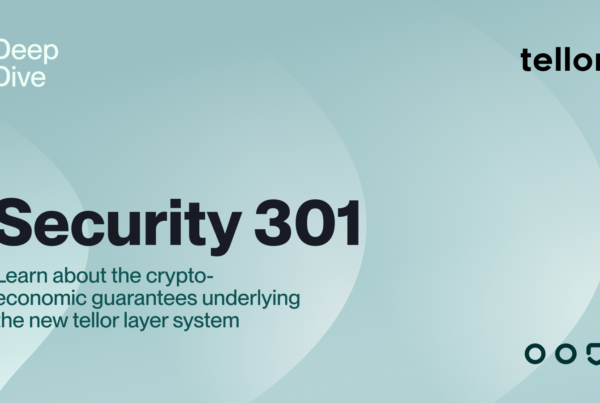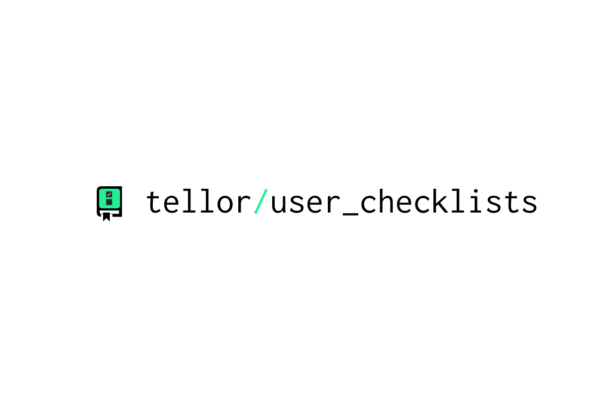Tellor is a decentralized oracle on the Ethereum network and utilizes a mined token, the Tribute, to incentivize validators, secure data points, and handle all governance matters of the system. As a token that grows in supply over time, it is necessary for Tellor to set an issuance rate for its system. This rate will represent the monetary supply growth rate of the system and has far reaching implications as to the inflation rate, token utility throughout time, and flexibility for price management of the Tribute.
Tellor has identified four various methods for issuing the token:
- Constant Issuance
- Constant Rate
- Decreasing Issuance
- Demand Based Rate
This article attempts to lay out the thought process and some of the pros and cons that may arise from that decision.
Background
Although cryptocurrencies are a new phenomenon, inflation economics and the idea and implications of having a growing supply of an asset on price and utility has been well studied by economists for the past century.
To better understand and articulate our decision, several terms need to be well defined and used accurately.
- Supply Growth Rate — rate at which the token supply increases
- Inflation — rate at which the price of the token increases
Many projects often confuse the term inflation as corresponding to the supply, when actually it refers to the price. As we all know from Ethereum, with its steadily increasing token supply, the correlation between price and new tokens is minimal at best.
As the central banker of our system, the Tellor Core contract has complete control of the growth in the supply. While the goal of most central bankers is to maintain a stable price level, the purpose of the token in the Tellor system is different as Tellor Tributes are likely a non-monetary asset. Although Tellor Tribute holders will happily accept any monetary premium associated with the token, the goals of Tellor for its token are not directly related to its utility as a money.
The actual goals are as follows:
- Provide Security
Besides their obvious use to incentivize miners through base rewards, Tellor Tributes are used for miners’ staking deposit as well as for the system’s dispute fee. Additionally, ownership of the Tellor token is utilized as aggregation unit for calculating votes in disputes.
- Create a robust and active Tellor ecosystem and community
The security of the Tellor system is directly related to how decentralized the system is. A diverse and distributed ownership of Tellor tokens, miners, and users implies a system that is not beholden to the interest of a small set of parties.
- Establish a sustainable system for years to come
Tellor’s demand may grow faster in the short term than in several years. It’s plausible to imagine a scenario where the Tellor system comes to a point where demand is no longer growing. Having a system that does not have a shortage or surplus of tokens given each stage is desirable.
Tellor Price Mechanics
The relationship between the supply growth rate and price in the Tellor system, like most crypto’s, is largely unknown, but likely very small. From a theoretical point of view, Tellor’s token price will increase as demand and the value of its ecosystem increases. More adoption, will lead to more demand for tokens (for actual usage) which will drive up the price of the token. This increase in price will lead to more competition amongst miners for rewards and therefore more security in the Tellor system, which will loop back to creating more adoption.

The problem in practice however is that more adoption/usage ≠ increased price. Token design mechanisms such as interest rate policies, burning mechanisms or minting processes can help link the two, but there is a soft relationship at best. In crypto land, the greatest indicators/influences on price are often completely subjective measurements such as FOMO, FUD, and short term price shilling. With this assumption/observation in mind, the pros and cons of the different token issuance methods are discussed below.
Constant Issuance
This is perhaps the simplest token issuance method. In this method, Tellor mints a fixed amount each block and the token supply grows at a fixed number each year, thus creating a gradually decreasing money supply growth rate.

The pros of this method are that it is very straightforward and the supply continues to grow. If we assume that Tellor will continue to grow indefinitely, this is definitely a positive aspect to our system. Additionally, the dev share continues at a constant pace based upon token price, thus allowing the Tellor team to continue to incentivize ecosystem growth.
The cons of this potential approach (similar to the constant rate approach) is that the token supply continually grows regardless of future demand. If you can imagine a point where Tellor becomes a core component of a few protocols and the system is secured almost primarily through tips, the newly minted tokens could represent unnecessary changes in a system that is theoretically self-contained.
Constant Rate
Were we going for a monetary premium, this approach may be the most inline with the free marketeers who founded our ecosystem. The idea of just setting a constant money supply growth rate stems from the thoughts of several prominent monetarist economists, most notably Milton Friedman, who subscribe to the belief that price changes are ultimately driven by money supply increases. The formula: MV = PQ indicates that the money supply times the velocity of money (how fast it is changing hands) is equal to price times real value of goods in an economy. To simplify, if the money supply increases, prices will increase as well. This is an almost self-evident statement, but one whose nuances are numerous and which may hold better in the long run than in the short.
The issue persists that for monetary assets, the variable V is highly variable and difficult to measure due to the credit system, and Q is almost meaningless (what is the real value of anything?).
The other (and primary) reason free market economists seem enamored with this view is that they do not trust the ability of the central bank to properly adjust the supply with demand. The claim is that the V and Q variables are all so opaque that any attempt to properly adjust M leads to unintended consequences such as asset bubbles and exacerbated credit cycles.

The pros of this method are that a) the rate of growth stays constant and b) Tellor’s dev share is a function of market capitalization rather than token price.
The cons are a) that the method grows eternally (even if demand tapers off) and b) that Tellor’s token is likely to decrease in value over time which discourages long term holding.
Decreasing Issuance
This is the Bitcoin model of token issuance, where it decreases over time.

The pros of this method are a) that it is a deflationary model (token price should increase faster over time and thus further incentivizes early adopters) and b) it can become a self-sustaining system and c) it pushes the devshare to zero over time ( which may be a positive if the goal is a truly self-sustaining, decentralized protocol).
There is also the argument that the system may at some point reach equilibrium. If a subset of projects use the system and are willing to pay for the system (reward miners via tips), should there be any inflation at all? Bitcoin takes this approach and decreases its mining reward over time to hopefully shift the network to a fee based system. Some critics have pointed out that Bitcoin may not be secure without the block reward.[1]
Demand Based Rate
This method is one that may be ideal and is probably the most accepted by current monetary policy experts. The basic idea is that the money supply should change (increase and decrease) in coordination with the price level. The Federal Reserve does this through it’s interest rate policy, increasing or decreasing the money supply (credit supply in this case) by utilizing changes in the Federal Funds Rate. As most Americans know, this has actually worked relatively well, since we’ve experienced a steady, yet low inflation rate for some time.
The critiques of this method for Tellor are a) some believe that interest rate manipulation leads to negative consequences, b) how do you codify an increase or decrease in price with proper changes to the money supply, and c) can and should Tellor be able to decrease its supply and or growth rate.
a) Free market economists around the world have long abhorred the practice of interest manipulation for sake of price stability. The general argument is that the interest rate, being the price of money, should be allowed to fluctuate freely so as to properly incentivize savings and spending in an economy. In simple terms, if there are a lot of savings in an economy, the interest rate should be low, and parties will be incentivized to take out cheap loans and grow the economy. As parties do this, pay off loans, and spend more in a good economy, savings will go down and interest rates will rise which will then incentivize more people to save, thus lowering rates. When the Fed artificially suppresses rates to try and boost economic growth or increase inflation (the two usually go hand in hand), they create a signal to the market that money is abundant. Since money always flows somewhere, loans that shouldn’t have been made are made and products that could not compete in a free market are created. The argument thus concludes that asset bubbles now form (e.g. bad loans for housing; stock market bubble) and the economy experiences exacerbated cyclical behavior.

Figure 1. How it should work
b) One big problem with trying to codify the actions of the Federal Reserve is that their actions are not exactly predictable or quantifiable. The US economy for instance has experienced relatively similar inflation rates since the 90’s and yet interest rate policy seems to have little correlation to current price levels. One big reason for this is that the Fed is forward looking. Inflation is a lagging variable, meaning that it takes time for price levels to decline. The Fed uses indicators such as GDP growth, employment numbers, credit flows and even financial sentiment all to gauge the prospective state of the economy. With limited variables on chain and even fewer with known relationships to token price, this makes hardcoding in the feds job difficult if not impossible
c) The last big issue is that Tellor token supply is also an incentive for miners. If the system is taking off and the price is rising quickly, a traditional Fed would reduce the money supply to try and curb inflation. For us, that would mean reducing the miner reward. The problem here though is that reductions in the mining reward can actually reduce the security in our system. If we lower the mining reward too much, miners will not compete properly to secure the network and although it will lead to a lower price, it may be for the wrong reasons.
Conclusion
Despite its shortcomings, modern finance theory has created a great system that usually fails due to the lack of integrity of the operating party. The big problem for Tellor though is that the difficulty in maintaining both decentralization as well a flexible system for issuance is an open research problem in and of itself. As Tellor seeks to launch, we need to choose an option that can be reliable in the near term and not open to claims of centralization; a dilemma which unfortunately rules out the demand based approach.
Among the other options, the best rate of token supply growth is not necessarily clear and depends on Tellor’s goals. One could make the argument that with increased prices come increased security (higher staking amount) while others could argue that by having a higher supply growth rate, more of the systems resources are targeted at mining and actual users of the system rather than holders of the currency. The constant rate approach may have the academic argument of reducing volatility and deflation in the long run; however, as in many other crypto currency systems, deflation may be a feature rather than a bug.
Overall, there are arguments for reducing and increasing the supply of tokens over time (decreasing issuance or constant rate). For these reasons, and the simple fact that constant issuance is a simpler approach, Tellor has decided to go with a constant issuance. The system will likely adjust to the inflation rate chosen, and since demand in cryptocurrency is so volatile, an active and managed treasury to provide liquidity will likely do more to harness volatility than any codified system of inflation.
In the end, the choice is important, but likely won’t be impactful for years to come. The demand based changes in the Tellor system will likely greatly overshadow the changes that would have come from codified issuance rate changes. In the meantime, Tellor and it’s community should continue to monitor the incentives in the mining reward along with associated research for upgrading to a better or more demand based model.
[1] http://randomwalker.info/publications/mining_CCS.pdf


